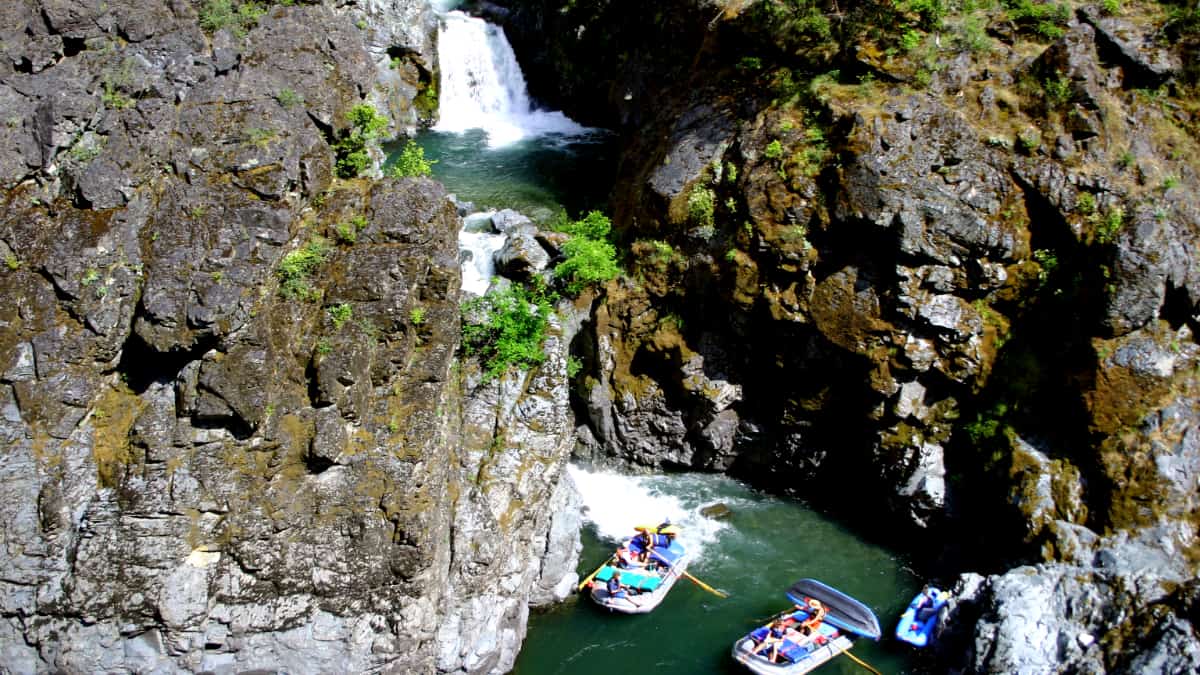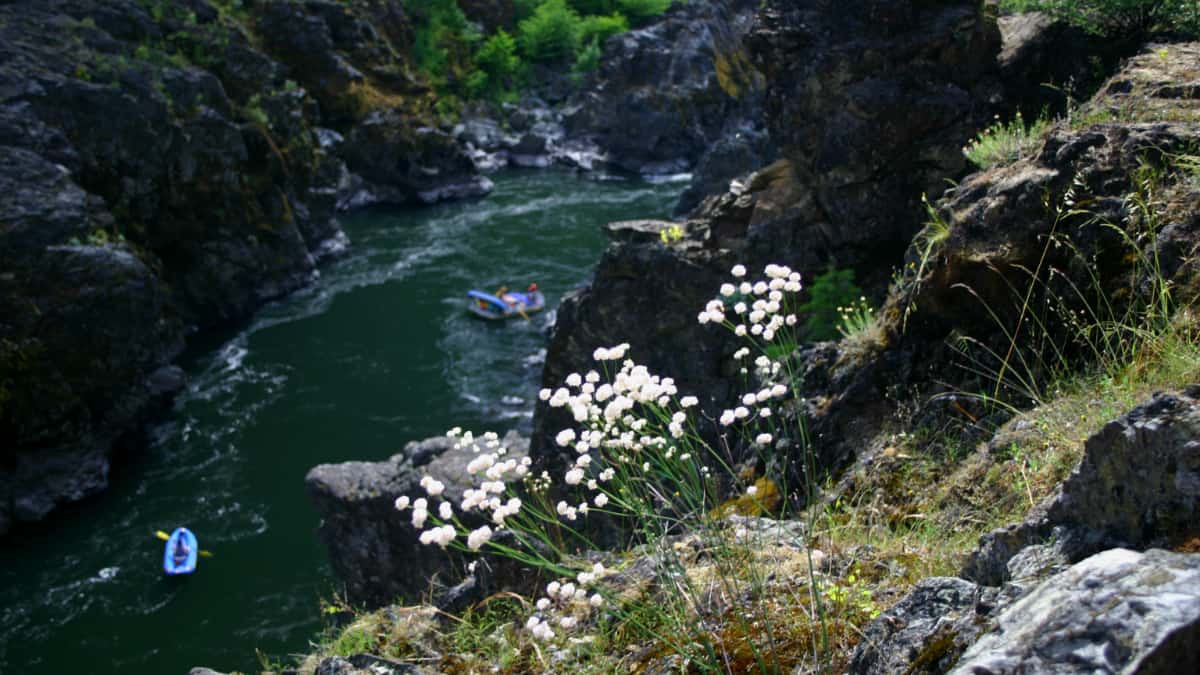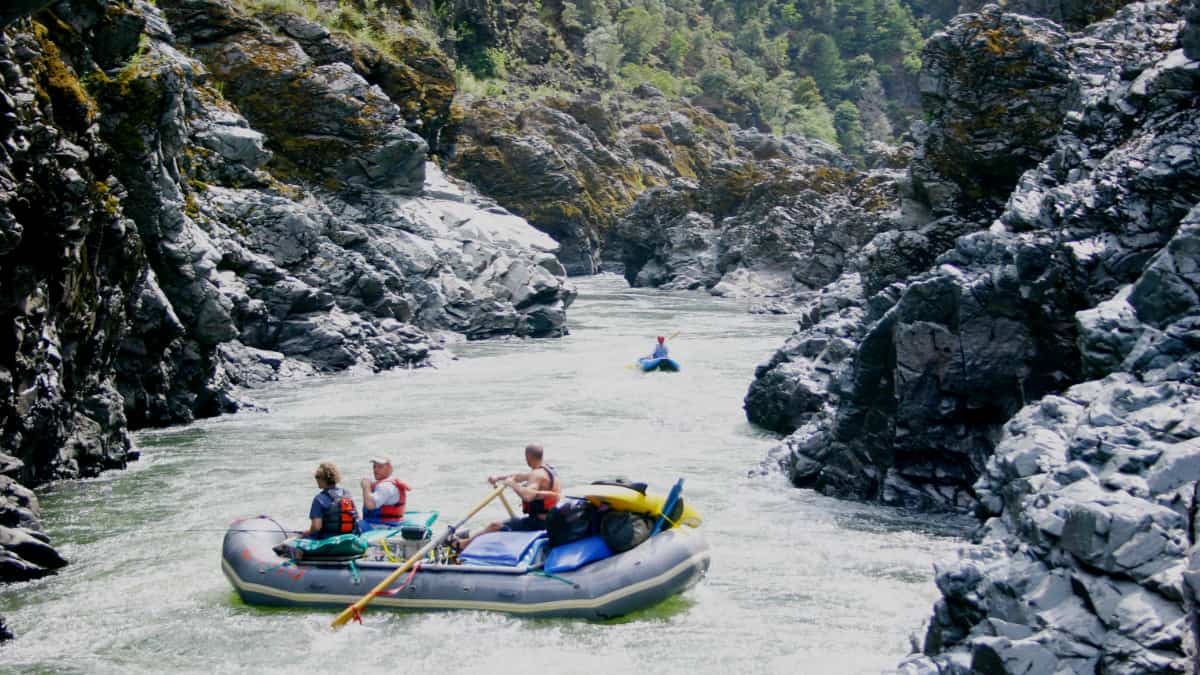The Rogue River is one of the best multi-day river trips in the world. Here are the top 5 reasons we love paddling it in the spring.
1. Incredibly Green & Lush
The canyon surrounding the Rogue River is always green, but in the spring it is so incredibly lush! The Rogue River is a wonderful river for day hikes and the vegetation in the spring makes it even more lovely.
2. Waterfalls
The many side creeks that flow into the Rogue are gushing with rainwater and there are many smaller waterfalls falling into the river that you wouldn’t normally notice in the summer. Many of our favorite, bigger waterfalls like Stair Creek have several times the water flooding over them, making for beautiful photos. Over the winter these flowing creeks also wash into the beaches we camp on, making for fresh, sandy beaches in the spring.

3. Wildflowers
There are many species of wildflowers blooming in the canyon in the spring. Some of our favorites include the the Glacier Lily, Poet’s Shooting Star, Indian Paintbrush, Western White Trillium, and Pacific Rhododendron.

4. Less People, More Salmon
Although the Bureau of Land Management regulates the number of people who raft the Rogue in the summer by permits, there are still less people on the river in the spring. Kids are still in school and most people aren’t in the mind-set yet for going rafting yet. Meanwhile, the first run of Spring Chinook are running. Nicknamed “springers,” these big Salmon are fast, aggressive, and difficult to catch. Even if you aren’t fishing, it’s interesting to see these fish swimming upstream underneath your raft or to catch a glimpse of one jumping up a steep rapid.

5. Easier Logistics
When planning a multi-day rafting trip for the spring, there are many variables. You never know if rains could make the river too high, if the river could drop too low, or if there is snow on the roads to get there. With the Rogue, while not completely fool-proof, it’s a relatively safe bet for being able to access and run a trip in the spring. Because of upstream dams, the water level doesn’t fluctuate much throughout the year. Often this part of Oregon dries out and warms up more quickly than rivers closer to the Cascade Range. The area near the put-in is less than 1000′ of elevation and has had a chance to melt any winter snow more quickly than higher elevation runs.

